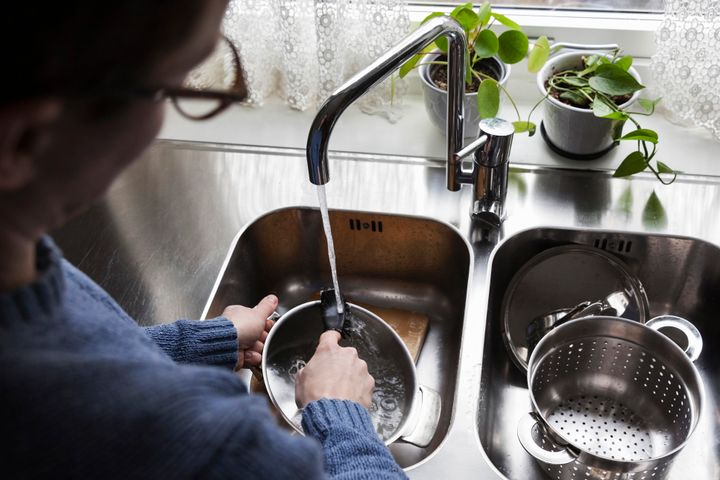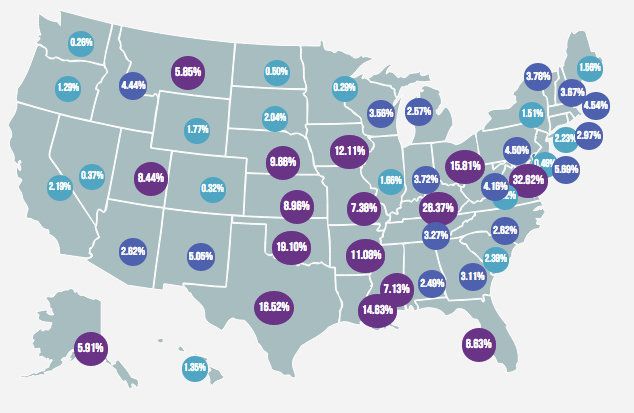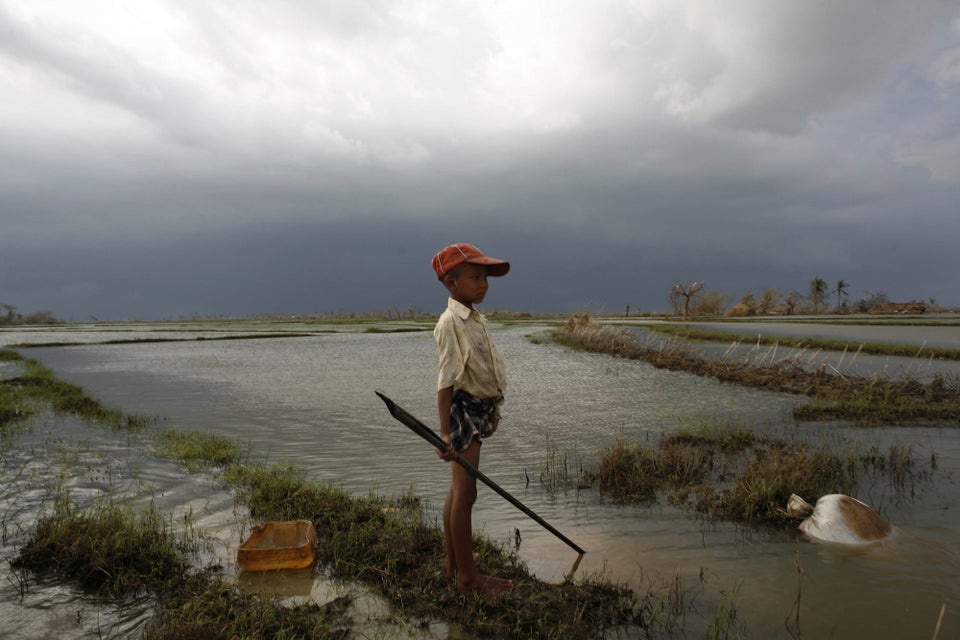
You probably assume that the water coming out of your faucet is relatively safe. In fact, 71 percent of people who responded to a HuffPost/YouGov poll earlier this year were at least somewhat confident in their community’s tap water.
However, there might be some reason for caution.
Over 7,500 health-based drinking water violations were reported in U.S. water systems last year, according to new data from the Environmental Protection Agency’s Enforcement and Compliance History Online database.
FluksAqua, an online community catered to water system professionals, analyzed the EPA data, focusing on maximum contaminant level violations that can affect public health ― specifically those related to the presence of disinfection byproducts, nitrates, arsenic, radionuclides and a type of fecal bacteria called coliforms. It also considered how many residents in any given state are customers of a community water system affected by at least one of these violations.
Such violations ― which utilities are required to notify their customers of under the Safe Drinking Water Act ― are not particularly common. But some states struggle more with these issues than others, and an interactive map allows users to compare state-to-state data that also includes the total number of water quality violations and how long they lasted.

Nine states — Arkansas, Iowa, Kentucky, Louisiana, Maryland, Ohio, Oklahoma and Texas — saw violations that impacted more than 10 percent of their residents last year.
About one-third of water customers in Maryland were affected by a health-based water violation, many of which were related to disinfection byproducts like bromate and chlorite. Long-term exposure to these byproducts have been linked to a potentially increased risk of cancer and reproductive and developmental disorders, according to the EPA.
Disinfection byproducts were also the culprit in the overwhelming majority of the water violations reported in Kentucky, where 26 percent of water customers were served by a utility hit with a violation.
On the flip side of that, five states — Colorado, Delaware, Minnesota, North Dakota and Washington — saw less than 1 percent of their population impacted by water violations.
The takeaway from the data, FluksAqua Americas President Hubert Colas explained, is that people are right to feel generally confident in their drinking water. But, he noted, some systems — particularly smaller utilities that have fewer resources — are struggling to keep their water up to code.
“We see that the facilities are confronted with a lot of issues in terms how they deliver water quality in the quantity that’s necessary to supply our homes and businesses with quality water 24/7, 365 days a year,” Colas told The Huffington Post. “That’s quite a feat and we take that for granted.”
It’s a feat that is spread across a large number of public water systems — approximately 155,000 in the U.S., according to the EPA.
Those systems are increasingly relying on state and local funding, as federal support for their operations and maintenance has stagnated in recent years. This makes smaller systems particularly vulnerable to problems and previous analyses have shown that these utilities typically represent the bulk of violations.
But few Americans seems to have a firm grasp on what goes on behind the scenes to keep our drinking water safe.
Only 21 percent of respondents to the HuffPost/YouGov poll conducted this year said they understood “very well” where their tap water came from and how it’s processed. Thirty-six percent of respondents said they understood their water source “somewhat well,” while 40 percent said they understood it “not very well” or “not well at all.”
There is also a dearth of user-friendly national data on water quality, which likely contributes to Americans’ lack of understanding about their tap water.
And that remains true even at a time when the ongoing crisis in Flint, Michigan, and protests over the Dakota Access pipeline’s potential impact on the Missouri River have raised awareness of the issue.
Dr. Katherine Alfredo, a research scientist at Columbia University’s Columbia Water Center, said the “inherent mistrust” of tap water is largely unwarranted, even given high-profile crises in Flint and elsewhere.
“These utilities take extreme pride in being a top utility or having the best-produced or best-tasting water,” Alfredo told HuffPost.
Still, we could all stand to deepen our understanding of what it takes to keep our water safe. If you’re concerned about your community’s water, you can access the EPA’s consumer confidence reports, which offer basic information about community water concerns. And the Centers for Disease Control and Prevention also recommends alerting your local water utility if you think something is off about the water coming out of your tap, or your local health department if you’d like your water tested.
“It shouldn’t take a crisis to be able to have these basic conversations about what’s in our water and where our water comes from,” Alfredo said. “Most Americans don’t even know what the quality of our delivered water is.”
―
Joseph Erbentraut covers promising innovations and challenges in the areas of food and water. In addition, Erbentraut explores the evolving ways Americans are identifying and defining themselves. Follow Erbentraut on Twitter at @robojojo. Tips? Email joseph.erbentraut@huffingtonpost.com.

